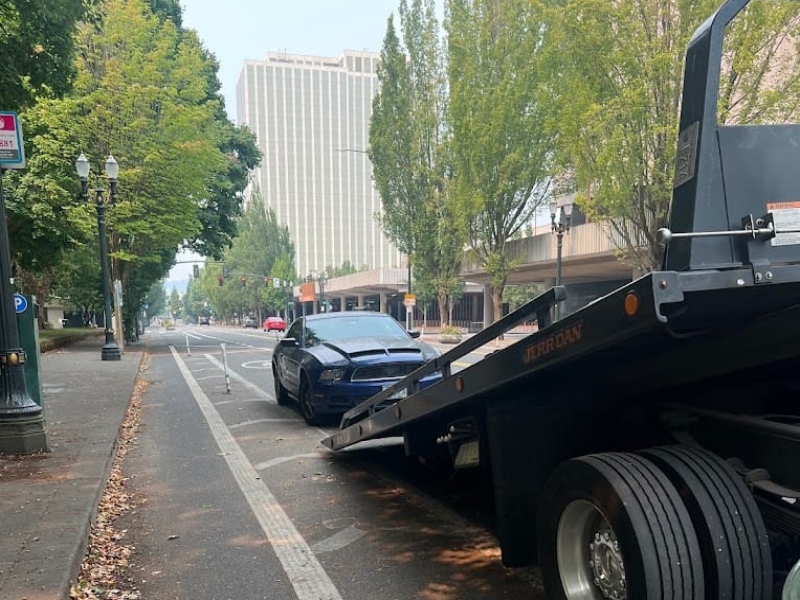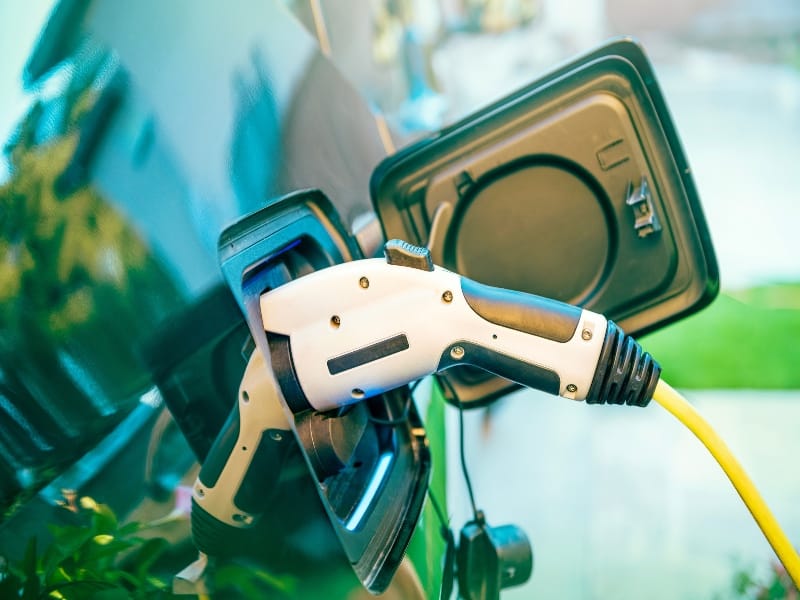Watt Now?
Electric vehicles have changed the way we drive, and now they’ve also changed the way we tow. The rise of EVs on Portland roads means we’ve had to adapt how we handle roadside assistance calls. That’s where our experience with Portland EV towing comes in. These vehicles need different handling, and the right methods can protect everything from the battery to the drive system.

Why Electric Vehicles Need Special Attention
EVs aren’t just gas cars with a battery. They’re built differently, and that means we approach them differently. Here’s what we keep in mind each time we get the call to tow one:
No Neutral Gear? No Problem.
Unlike most gas-powered vehicles, many electric models don’t have a true “neutral” setting. Some EVs lock their drive wheels when the vehicle is turned off. That means we can’t just hook it up and drag it. Doing so could cause serious damage to the drivetrain. Instead, we check the manual for the proper tow mode or use flatbed towing to keep the wheels off the ground entirely.
Battery Placement
The battery pack in an EV often sits under the car floor. That changes the balance and ground clearance. When we load it onto a flatbed, we make sure the angles are right and use ramps or wood blocks as needed to avoid scraping the underside. We never rush that step.
Regenerative Braking Systems
Many EVs use regenerative braking that kicks in automatically when the wheels spin. If we towed them with their wheels on the road, those systems could engage and damage components. For most EVs, the safest method is to keep every wheel off the pavement.
Step-by-Step: Towing Your EV the Right Way
Here’s how we handle a standard EV towing job:
- Check manufacturer guidelines. Each EV brand is different. Tesla, Nissan, Rivian—they all have unique requirements.
- Select the right truck. Most EVs go on a flatbed tow truck. It prevents wheel rotation and protects the drivetrain.
- Power check. We check if the vehicle powers on. Some EVs need to be in “tow mode,” which can only be activated while the system is live.
- Secure with soft straps. We avoid metal hooks and chains that could stress delicate undercarriage parts.
- Monitor battery status. EV batteries lose charge even when idle. We document their level in case the vehicle goes straight to a repair shop.
EV Towing Mistakes We Avoid
Our Portland EV towing team has seen what happens when people unfamiliar with EVs try to tow them. These are Portland EV towing mistakes we always avoid:
- Towing from the wrong end (front vs. rear-wheel drive matters)
- Letting the wheels spin on the road
- Using chains that can damage the undercarriage
- Failing to check for “tow mode” settings

Need Portland EV Towing? Call Newhouse
At the end of the day, we at Newhouse Towing treat every EV tow with care. We’ve seen firsthand how sensitive these vehicles can be, and we’ve adapted to make sure our Portland EV towing techniques match their needs. Portland EV towing isn’t a guessing game—it’s a specialized task that calls for attention, patience, and the right Portland EV towing equipment.
So if your EV stops running, call someone who knows the difference. Because with electric vehicles, it’s not just about getting from A to B. It’s about getting there the right way.

